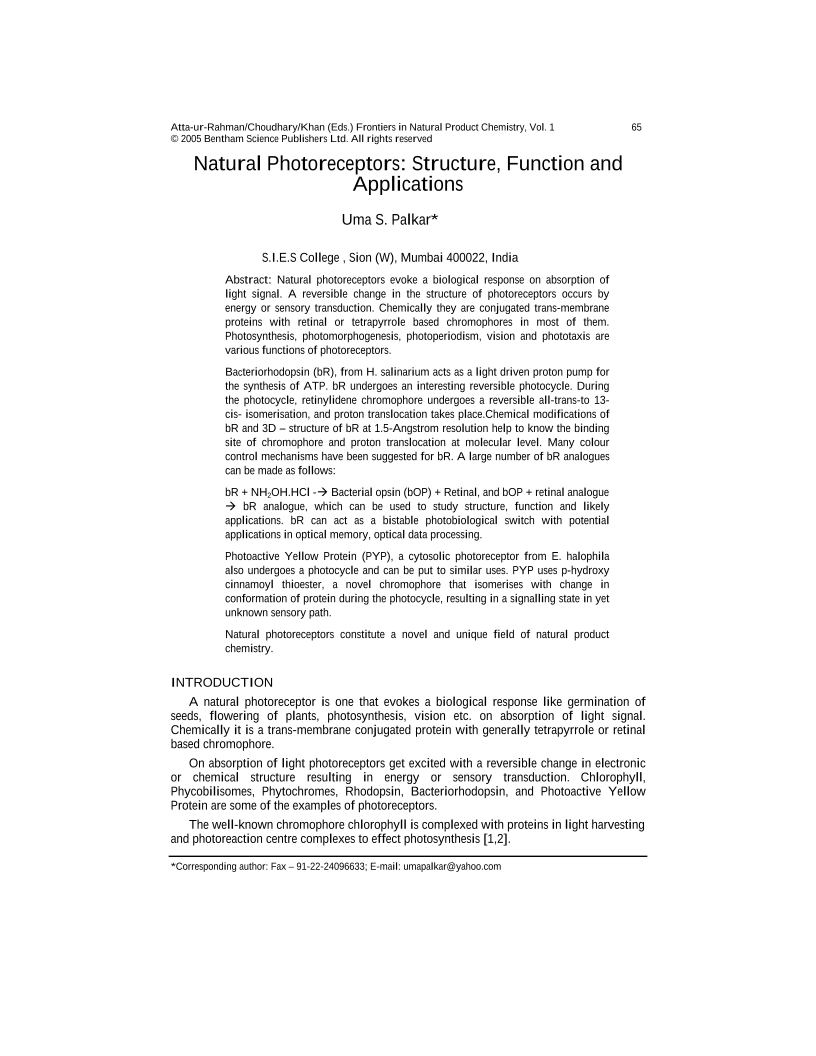Natural Photoreceptors: Structure, Function and Applications

- By Uma S. Palkar1
-
View Affiliations Hide Affiliations1 S.I.E.S College , Sion (W), Mumbai 400022, India
- Source: Frontiers in Natural Product Chemistry: Volume 1 , pp 65-71
- Publication Date: January 2005
- Language: English
Natural Photoreceptors: Structure, Function and Applications, Page 1 of 1
< Previous page | Next page > /docserver/preview/fulltext/9781608052127/chapter-8-1.gif
Natural photoreceptors evoke a biological response on absorption of light signal. A reversible change in the structure of photoreceptors occurs by energy or sensory transduction. Chemically they are conjugated trans-membrane proteins with retinal or tetrapyrrole based chromophores in most of them. Photosynthesis, photomorphogenesis, photoperiodism, vision and phototaxis are various functions of photoreceptors. Bacteriorhodopsin (bR), from H. salinarium acts as a light driven proton pump for the synthesis of ATP. bR undergoes an interesting reversible photocycle. During the photocycle, retinylidene chromophore undergoes a reversible all-trans-to 13- cis- isomerisation, and proton translocation takes place.Chemical modifications of bR and 3D - structure of bR at 1.5-Angstrom resolution help to know the binding site of chromophore and proton translocation at molecular level. Many colour control mechanisms have been suggested for bR. A large number of bR analogues can be made as follows: bR + NH2OH.HCl -→ Bacterial opsin (bOP) + Retinal, and bOP + retinal analogue → bR analogue, which can be used to study structure, function and likely applications. bR can act as a bistable photobiological switch with potential applications in optical memory, optical data processing. Photoactive Yellow Protein (PYP), a cytosolic photoreceptor from E. halophila also undergoes a photocycle and can be put to similar uses. PYP uses p-hydroxy cinnamoyl thioester, a novel chromophore that isomerises with change in conformation of protein during the photocycle, resulting in a signalling state in yet unknown sensory path. Natural photoreceptors constitute a novel and unique field of natural product chemistry.
-
From This Site
/content/books/9781608052127.chapter-8dcterms_subject,pub_keyword-contentType:Journal -contentType:Figure -contentType:Table -contentType:SupplementaryData105

